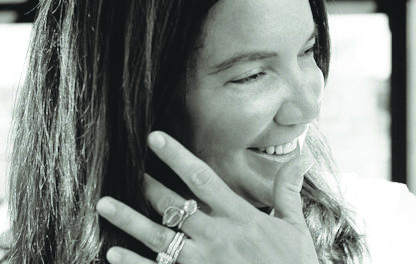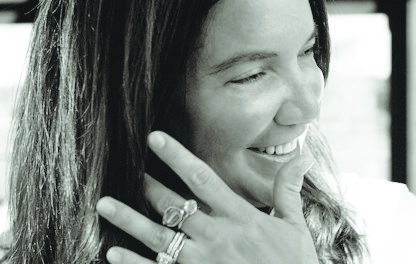 Riddled anxieties, hidden phobias, bottled up desires, long held secrets, the vanity of voyeurism, the dark side of the human condition and an overall sense of creeping doom; this is noir. And along with my husband, a good oaky chard, books with inked pages and old films, well, these are a few of my favorite things.
Riddled anxieties, hidden phobias, bottled up desires, long held secrets, the vanity of voyeurism, the dark side of the human condition and an overall sense of creeping doom; this is noir. And along with my husband, a good oaky chard, books with inked pages and old films, well, these are a few of my favorite things.
After our first meeting (on a late fall Saturday eve 21 years ago, at a dive bar, where I kicked his faded Levi’ed butt in billiards), my now husband and I finally agreed on a time and location for our very first date which would take place the following Tuesday.
We ran by his apartment first for a glass of red before dinner out and never left. I know what y’all are probably thinking right about now, but a lady never kisses and tells. Only, we never left because we found out how much we had to talk about. It was one of those rare meetings where 8 hours of conversation, a big bottle of vino and a large pizza pie felt like it was consumed in 7 minutes flat and you’re not ready to call it a night just yet.
Within those 8 hours, we discovered the many loves we both shared. One being the wholehearted devotion to noir, both in fiction and film: the bullet point, hollow tipped writing of James Elroy in his L.A. Quartet series as he enters under the skin, exposing the toxic gut of the LAPD and human exploitation during the ’50s in Hollywood; the gritty pulp of Elmore Leonard fiction and the flashbacked remorse in search of Rosebud in Orson Welles’ Citizen Kane; the copious but claustrophobic lens of Hitchcock’s camera layering miniature sets on top of smart dialogue that catches you peering in and opens up a little wider for you to lean in.
Now, the cool thing about Hitchcock, besides the fact that his name is now an adjective, is he astutely nailed the creepy outliers; the mismatched, weirdly concocted extra bits that don’t fit but lay around regardless, scattered carelessly around while being tip toed, stepped over and redirected away from. The Hitchcockian thing is we all know they’re there, and when our eyes are finally focused and locked to them, like Clockwork Orange (another fine film), we cannot look away.
It was hard for us to pick a favorite Hitchcock film there are so many: Strangers on a Train, The Birds, Pyscho, Vertigo, North by North West, Niagra. Still is. But when it became time for a proper introduction for our girls, we chose the steadfast 1954 classic, Rear Window, for their first glimpse into the genre of noir.
The dinner scene, when Grace Kelley’s Lisa is preparing dinner (perfect like always) while Jeff is spying on his neighbors as they do the same while deconstructing what they each want from their own relationship through the interactions of strangers, GENIUS.
And it brought me right back to my first date, even to realities I had no idea existed way back then:
Stella (the wise nursing aide and the second fellow voyeur to Jimmy Stewart’s Jeff): When two people love each other- WHAM- like two taxis on Broadway.
Or how about . . .
Stella: Every man’s ready to get married when the right girl comes around.
A year later, we were engaged.
The other overwhelming thought I had while re-watching Rear Window with the girls in 2017 is: this is how we live all the time now, every day, every minute, glued to Instagram and Facebook and Google like Jimmy Stewart fastened fiercely to his long-distance photographer’s lens. These days, it’s so very easy to be a voyeur and an excellent one at that. We just scroll down, swipe right, then left. What was once closeted and Hitchcockian is now the accepted and encouraged norm. A lens by any other name is still . . . well, you get what I am getting at.
Only we all deep down wonder, as Lisa remarks when pressed: I’m not much on rear window ethics.
At the core of technology, we feel odd and a little sullied viewing in, tracking down and screen shooting other people as they go about their lives. Who wouldn’t? Why? Because there is something, well, very dark and noir about it all. But we justify by saying: they post it up and put it out there for all to see.
But as Stella said, and it’s now more poignant, than ever: We’ve become a race of Peeping Toms. What people ought to do is get outside and look in for change. Yes. Sir. How’s that for a bit of homespun philosophy?
Jeff: Reader’s Digest, April 1939.
Stella: Well, I only quote from the best.
I think, though, Sir Alfred Hitchcock was saying we need to get outside more and not look back in at other people’s “windows,” but look back in our own panes of protective glass.
It’s hard to navigate the new voyeurism of digital information and image gazing in second snippets with a paragraph of hashtags and an attached 3 minute video, high-res. I have no answers, nor a book of rules of etiquette to reference. I only have a little hope.
Hope that conversation, in nature, in person, in books, poetry, stage and film will reign supreme in the end.
There’s still lots to discuss face to face. There always is. And that’s something that will never change.






